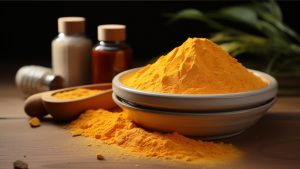Was ist Urolithin A?
Was ist urolithin A?
Urolithin A is commonly known as urolithin A; CAS number: 1143-70-0, molecular weight: 228.20000; Density: 1.516g/cm3, boiling point: 527.9ºC at 760 mmHg, molecular formula: C13H8O4;
Urolithin A is an intestinal metabolite of ellagic acid with antioxidant and anti-proliferative effects. The IC50 values of T24 and Caco-2 cells were 43.9 and 49 μM, respectively.
Urolithin A is a secondary metabolite of the natural polyphenol compound ellagitannin. Recent studies have shown that urolixin A has important biological activities, such as antioxidant, anti-inflammatory, anti-aging, regulation of estrogen/androgen and induction of mitochondrial autophagy. Therefore, urolixin A plays an important role in the prevention and treatment of many diseases, such as cancer, cardiovascular disease, Alzheimer’s disease, Parkinson’s disease, diabetes, obesity, osteoarthritis, etc.
The origin and structural characteristics of urolitin
Urolitin A (UroA) and urolitin B (UroB) were first isolated as ellagic acid metabolites from sheep kidney stones. Natural urolithin is not common in nature, but as a metabolite of ellagitannin or ellagic acid, it is widely distributed in the urine, feces and bile of humans, rats, mice, cattle, pigs and other mammals. Espin et al. found that urolithin could be enriched to a high concentration in the bladder and gallbladder of Iberian pigs, while there was no obvious enrichment in muscle, fat, kidney, liver, heart and other tissues. In mice and human experiments, urolitin and its derivatives were found to be enriched in prostate tissue and distributed in human colon tissue.
Urolithin is formed by ellagic acid losing a lactone ring and gradually dehydroxylation [17]. After ellagic acid loses the lactone ring, urolixin M-5 (UroM-5) is obtained, and several tetrahydroxyurolixin isomers such as urolixin D (UroD) and urolixin M-6 (UroM-6) are formed after the dehydroxylation of UroM-5 at different locations. After the loss of one hydroxyl group, trihydroxyurolitin can be obtained, such as urolitin C (UroC) and urolitin M-7 (UroM-7), and trihydroxyurolitin can be obtained, such as UroA and urolitin A isomer (isoUroA), and finally monohydroxyl urolitin B (UroB). In addition, isoUroA is easier to dehydroxy and generate UroB than UroA [9]. Garcia-Villalba et al. [18] found ellagic acid metabolites UroM-5, UroM-6, UroM-7, UroC and urolitin E (UroE) through in vitro metabolism experiments of intestinal microorganisms, which confirmed for the first time that urolitin is produced under the action of intestinal flora.
The characteristic UV profile of urolitin can be used to identify urolitin and its methyl ester, glucuronate, or sulfate derivatives with different hydroxyl substitutions [18]. The UV profile of urolitin in methanol shows that there are two main absorption peaks at 240 ~ 400 nm, namely, the peak 1:300 ~ 380 nm and the peak 2:240 ~ 280 nm. In many cases, the peak at 280 ~ 300 nm can also be detected. Peak 1 and peak 2 are not related to the characteristic ring of urolixin [19], but the UV-atlas can distinguish whether there is hydroxyl substitution at C-9 position. For example, UroA isomer has hydroxyl at position 9, its peak 1 is blue shifted, and the absorption of peak 2 is increased, with the maximum absorption wavelength at 256 nm. However, 256 nm is also the main absorption peak of urolithiones with hydroxyl substitution at C-9 [9].
Urolixin A is A product of intestinal flora. After the human body eats vegetables and fruits such as pomegranates, berries and nuts, the intestinal bacteria and the phenolic antioxidants rich in these vegetables and fruits act to produce urolixin A. In recent years, some preclinical studies have pointed out that urolixin A can help mitochondrial proliferation and strengthen its function to promote cell health, especially in muscles, brain, joints and other parts.
Additional benefit of urolixin A: Weight loss and visceral fat loss
In addition, urolixin A helps with weight loss.
Backvita



